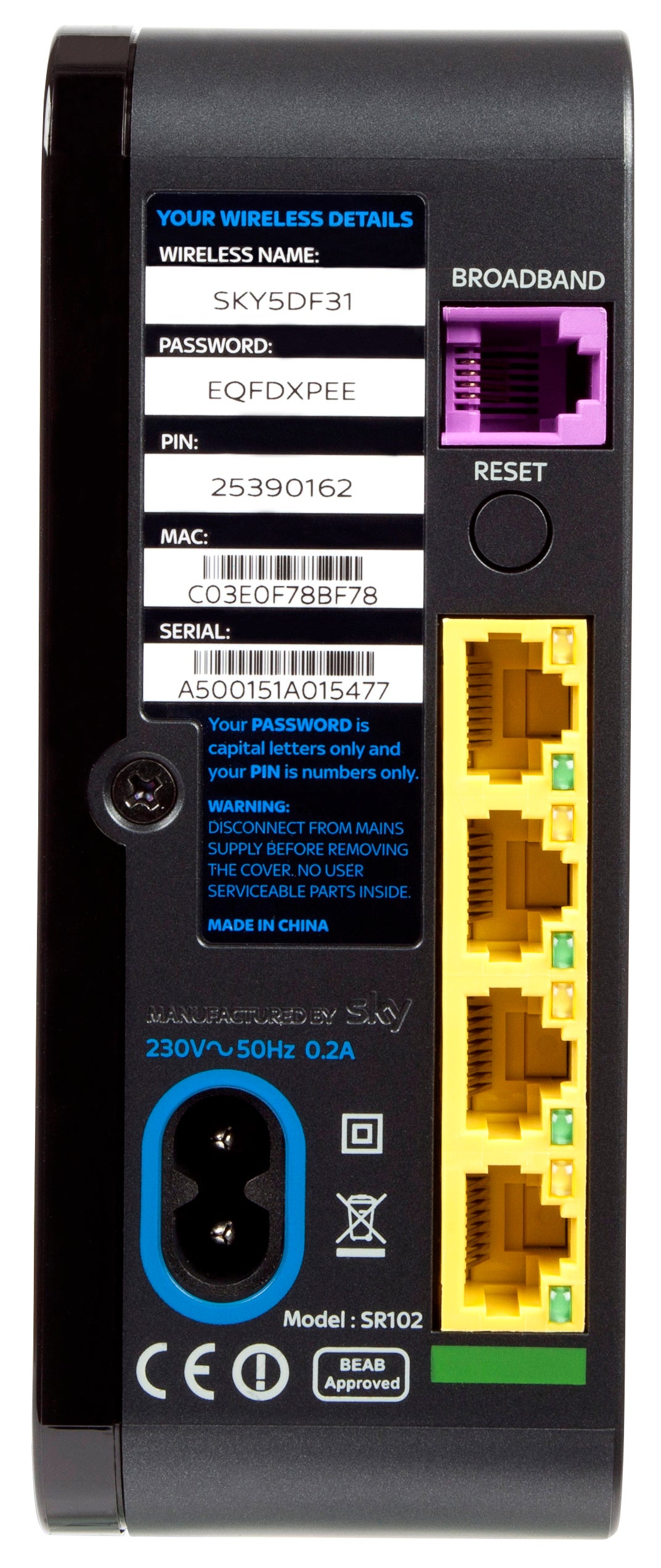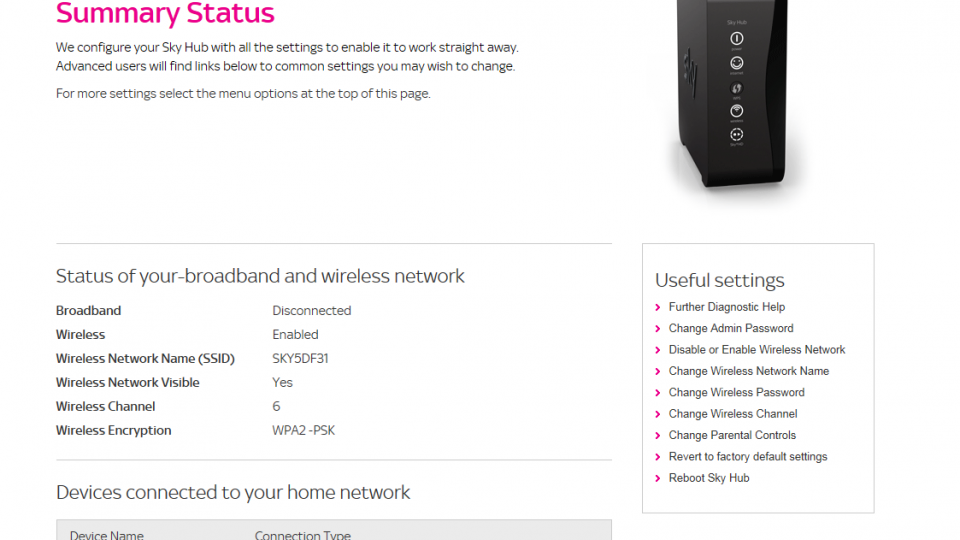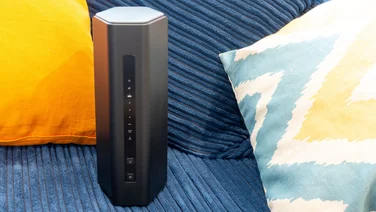To help us provide you with free impartial advice, we may earn a commission if you buy through links on our site. Learn more

Sky promises that its Hub is simple enough to set up that you won’t need an engineer to visit, which will be a relief to anyone who’s ever lost a day waiting around. As Sky operates over ADSL or VDSL and the Hub has an integrated ADSL2+/VDSL modem, you’ll just need to connect the Hub to a master phone socket using the included microfilter to get online. The router comes with a short power cable, so this might affect where you put it. The router is only a single-band model, so you won’t be able to use faster 5GHz 802.11n networks or the latest 802.11ac standard.

The Sky Hub is actually quite a sleek design, which more closely resembles an external hard disk than a router. It stands up vertically and is a mix of matt and glossy black plastic with a Sky logo emblazoned on the side. The front has a vertical bank of large LEDs to indicate activity, including a slightly garish smiley face to indicate the router has an operational internet connection.
Sky claims its Hub has intelligent power consumption, which automatically switches to a low-power mode when the router is not in use. We tested this with a power meter, and found that with the router in use it was drawing around 4.7W, but with no devices connected and the router in an idle state, the power draw dropped to 3.7W. This compares favourably with a more power-draining router such as the TP-Link Archer C9, which draws upwards of 9W when idle.

The default SSID and network password are written on the back of the router, and there’s also a WPS pairing button on the front of the router and a WPS PIN number on the back. There are four 10/100Mbit/s Ethernet ports on the back, which is disappointing for those who want the fastest wired network performance.
Perhaps in a move to make the setup experience as simple as possible, Sky would prefer you not to tinker too much with the router’s settings. You’ll need to delve into the setup guide’s Advanced section to find the login details to access the router’s web-based admin if you want to make any changes. Once you’re in it’s all very basic. There are the usual options for setting up Dynamic DNS, and you can also set up port forwarding, which is listed as Firewall Rules in the admin interface.

Wireless performance from the Sky Hub’s 2.4GHz network was disappointing. When testing it with our laptop’s integrated 802.11n adaptor, we only saw 13.5Mbit/s at 10m range and 2.6Mbit/s at 25m. Even at just 1m distance from the router we only saw 20.3Mbit/s. This isn’t quite the worst performance we’ve seen, but it’s certainly very disappointing. The lack of full-speed Gigabit Ethernet ports on the router means you’ll never be able to get more than 100Mbit/s, even when running a cable.
Sky has quickly been left behind by its ISP rivals when it comes to supplied routers. The Sky Hub is light on features and has poor performance, so is ripe for an upgrade.






